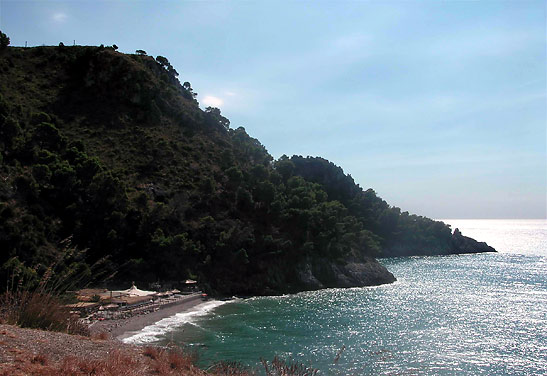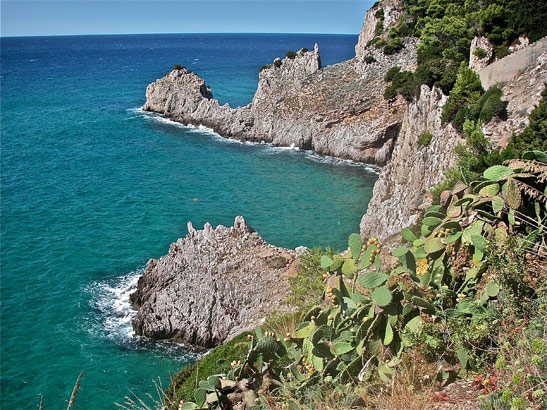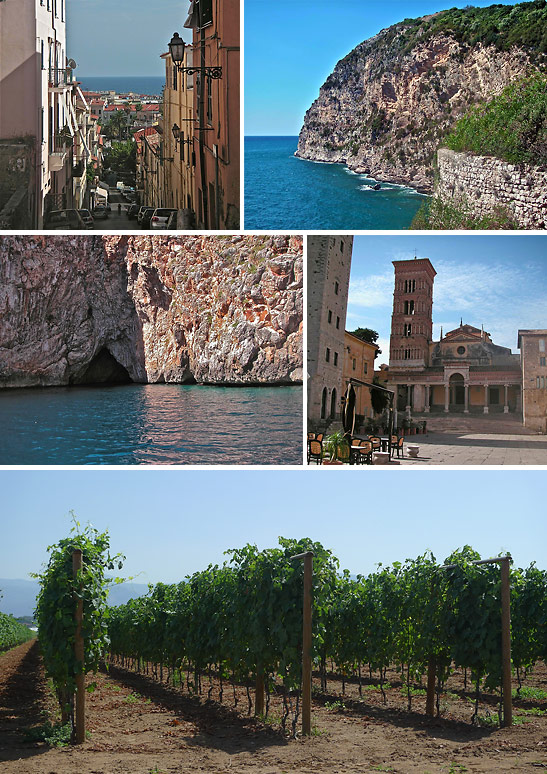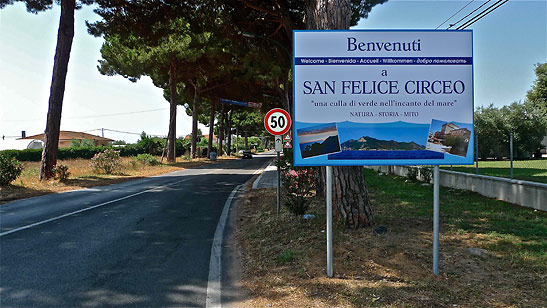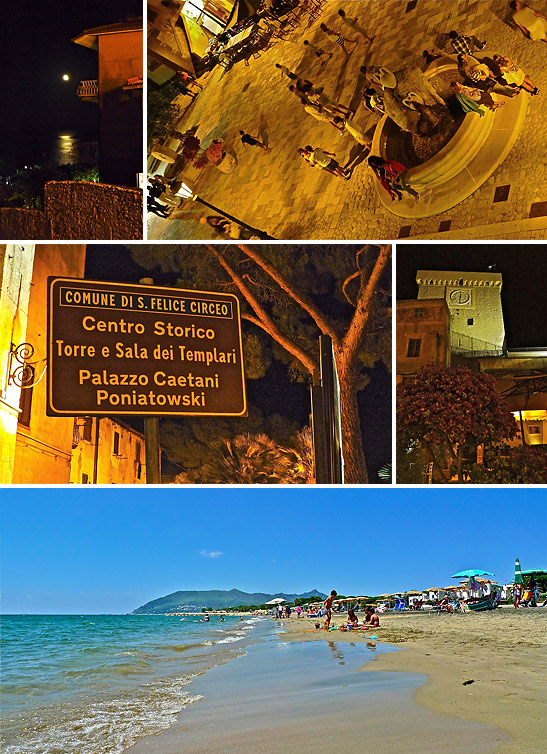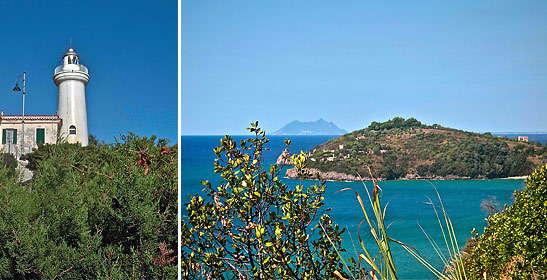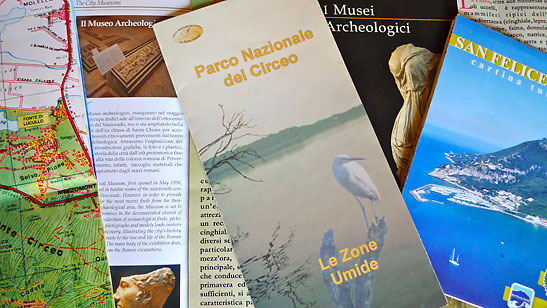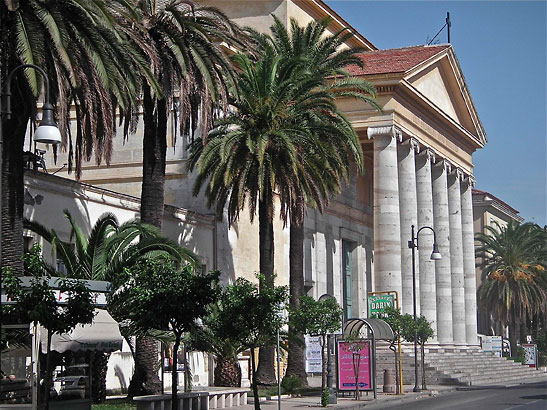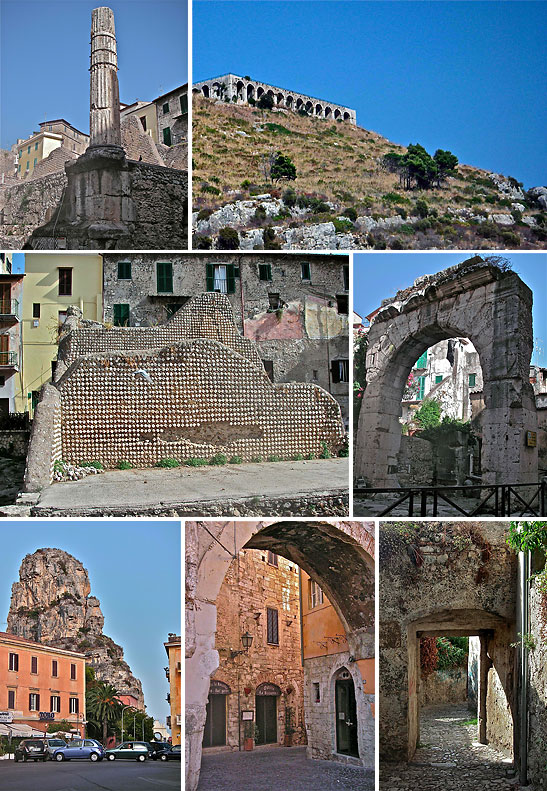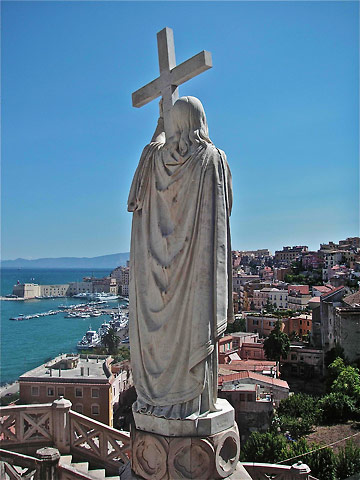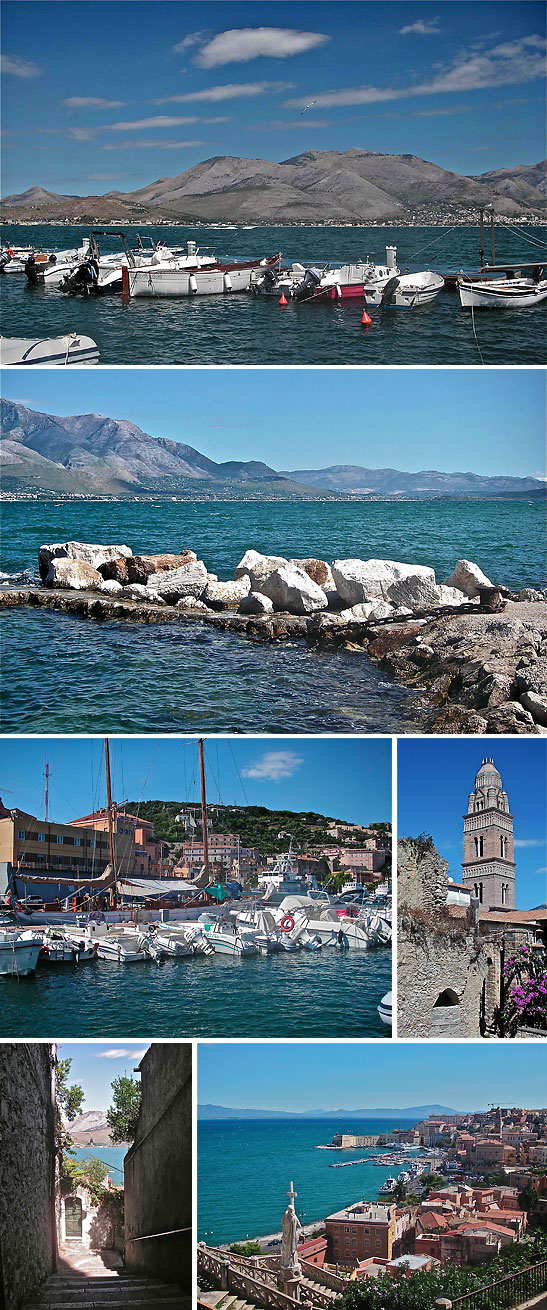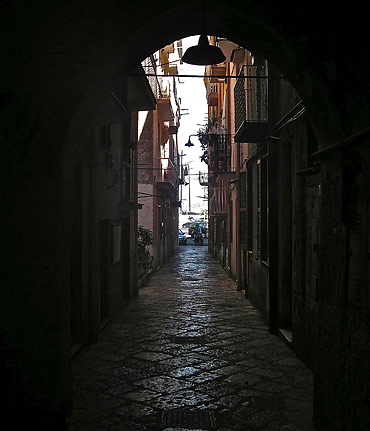 |
 |
|
 |

|
Walk in the Footsteps of Ulysses
Story and photos by Tom Weber
With its picturesque cities and towns dotting the landscape, a handful of islands close by out at sea, the crystal clear shades-of-blue Tyrrhenian, vineyards filled with juicy grape just waiting to be turned into award-winning wine, seafood dishes of every type to whet your palate and a national park to explore, what's not to like about it. Must-see stops in San Felice Circeo, Terracina and Gaeta.
San Felice Circeo The history of this bustling little seaside town overlooking the Tyrrhenian Sea is filled with myths and legends that give it an unequal appeal.
According to classical Roman writers, the island of Aeaea, where Ulysees and crew were to have landed, was identified as Monte Circeo (Mount Circeo) on Capo Circaeum (Cape Circeo). It may have been an island in Homer's time (ca. 8-7 century BC), with marshes and sea surrounding its base; but, today, it's a small peninsula with a long lido (sandy beach) that's attached to the mainland. Archeologists have identified one grotto on Cape Circeo as La Grotta della Maga Circe (the Cave of the Sorceress Circe).
In addition to Ulysses and his crew and the sorceress Circe, the Neanderthal roamed the area and lived in its caves; forces from Imperial Rome kept the peace for a time followed by the Papacy; and last, but certainly not least, the mysterious Knights Templar dismounted for a spell. Detailed online tourist information on San Felice Circeo is available at: www.sanfelicecirceo.net/en/index.shtml.
National Park of Circeo The only park of its kind in Italy to include both a plain and coastal area. The park is divided into five main habitats: the forest, the promontory, the coastal dunes, the wetlands and the island of Zannone. Online tourist information at: www.parks.it/parco.nazionale.circeo/Eindex.php
Terracina Just 60-miles south of Rome, La Città d'Arte (The City of Art) rises along and above the historic Via Appia (Appian Way), and is right next door to San Felice Circeo. This port and seaside resort city claims its heritage first from the Etruscans, then the Volscians and finally the Romans. It is the only point where the mountains reach down to touch the Tyrrhenian Sea.
Landmarks of note are the Temple of Jupiter, the Emilian Forum, Piazza Municipale and the Trajan Port. Not to be overlooked is a boat ride out to the Pontine Archipelago to take in the five islands that make up the chain: Ponza, Palmarola, Zannone, Ventotene and San Stefano. Online tourist information at: www.terracina.eu.
Gaeta Prior to the Risorgimento (The Resurgence that unified Italy) in the mid 1800s, Gaeta was a secondary maritime republic that eventually gave up its independence to become part of the Papal States. This once proud city still has its seafaring moments, as Gaeta is the overseas homeport for the United States Navy's Sixth Fleet flagship. Today, Gaeta beckons tourists to come and sample the treasures that lie at the tail end of the Riviere Ulisse. Have the lens cap off as you explore the Aragonese-Angevine Castle and the town's medieval center, and become awestruck by breathtaking panoramic views from atop Mount Orlando. If its fun-in-the-sun you're looking for, do like smart Romans and Neopolitans do, head to one or all four of Gaeta's blue-flag rated beaches: Serapo, Fontania, Ariana and Sant'Agostino. And if we're talking Gaeta we have to talk olives, the homegrown Olive di Gaeta, the "black pearl of Italian olives" – one bite and your tastebuds immediately come alive.
Finally, a stop in Gaeta would not be complete without a stroll down ancient cobblestoned Il Budello (literally, The Gut). The longest street in the city, but also one of the narrowest at only 2.5 meters, Il Budello is a pedestrian-only alleyway filled with workshops, artisans and mom-and-pop food markets at eye level, apartment dwellers right above, and the colors and sounds of centuries past all around. For complete, up-to-date tourist information visit the Gaeta Pro Loco site: www.prolocogaeta.it. Once there, just click on the Union Jack flag for the English version. Now that you've had a piccolo assaggio (a little taste), maybe you'll consider adding the Riviera di Ulisse to your travel bucket list. Do let me know. Ciao for now. Related Articles: |
|
Feedback for Destination Bosnia: Inside Sarajevo's Tunnel of Hope Spent time in Sarajevo in the fall of 1973…beer was excellent! --- David * * * * Hi Tom, I must say, you're photographs are always amazing. They are top notch. You bring so much class to Traveling Boy. It's photographs like yours that make me want to go out and do my own traveling. Please don't get tired of sending us your amazing adventures. It's such a delight for the soul. --- Raoul, Whittier, CA * * * * Hi Tom: --- David * * * * Hey Tom – Wow! Love those photos – they are so super that they make me A) Want to start eating NOW. B) Go there myself. C) See all that pristine beauty that looks so restful and peaceful. Great story, superb pix!!! Bravo!! --- John, Los Angeles, CA * * * * Feedback for Destination Southwestern France: Saint-Émilion Good job, Tom, and timely info. St. Émilion is in the list of places Jim Hayes and I will visit in September 2014. If we get the chance, we will exploit your experience to enhance the trip! --- Bobby Harper, Dameron, MD * * * * Feedback for Vicenza Walks – Monte Berico I lived in Vicenza for 4 years in the U.S. ARMY from 1963 to 1967. A wonderful place to explore. Palladio’s works are amazing. Have been back twice since and find new places to visit. My favorite is MONTE BERICO where I have some wonderful photos of my family. --- Dr. Albert Pizzi, Hanover, MA * * * * I liked the new TB particularly the Vicenza article that took me back as a youth when we lived in Naples and travelled up there for a baseball tourney (U.S. Military Bases dependent schools played each other.) Took me back to the plaza. --- Bill Feedback for A Canterbury Trail (Sutri) Very interesting note. I have wedroned which route the early pre-Christian and Christian pilgrims travelled to Rome from England. Is it still possible to travel the Francigena trail? --- Pawel You can find out more info on walking tours of Via Francigena at this site: http://www.compagniadeicammini.it/en/. Thanks for stopping by and commenting.. Tom * * * * Good article, enjoyed reading it. Saved your recommended sights for future use. --- Dardenne Prairie, MO * * * * You're going to be great at this Tom. Congrats. --- Donna Vissa -Montreal
|
This site is designed and maintained by WYNK Marketing. Send all technical issues to: support@wynkmarketing.com
|

|











